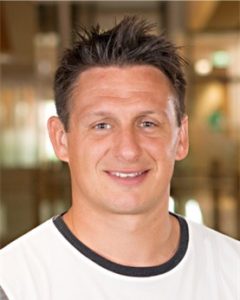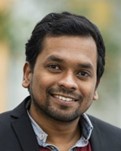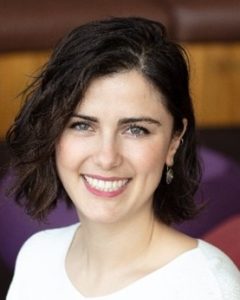Events

- This event has passed.
Research methods for Solar PV
13th April 2021 @ 10:00 am - 14th April 2021 @ 3:00 pm BST
FreeOnline training workshop for early career researchers
CLICK HERE TO REGISTER
Eighth in a series of annual training workshops, this year’s event will focus on PV Devices and Systems. Leading researchers will give their specialist ‘must-have’ overviews of key knowledge essential for postgraduates, postdocs and industrial researchers in Silicon, Perovskites, Organics and Tandems. In addition, this year, there will also be talks on PV Modelling, Characterisation, and PV for off-grid systems. Each speaker will explain the device architecture, fabrication, limiting aspects, research opportunities and performance of their specialist technology areas.
Tuesday 13th & Wednesday 14th April (10.00am-3.00pm BST)
The workshop is free and open to everyone, spread over two easy to digest sessions on consecutive days.
DAY 1: Tuesday 13th April (10.00am-3.00pm BST)
Dr. Brett Hallam, University of New South Wales – Silicon Photovoltaics
Dr. Imalka Jayawardena, University of Surrey – Perovskite Solar Cells
Dr. Derya Baran, King Abdullah University of Science and Technology – Organic Solar Cells
Dr. Zhengshan Yu, Arizona State University – Tandem Photovoltaics
Day 2: Wednesday 14th April (10.00am-3.00pm BST)
Dr. Malcolm Abbott, PV Lighthouse – Modelling for PV
Dr. Hieu T. Nguyen, Australian National University – Material Characterization for PV
Dr. Iwona Bisaga, Loughborough University – PV and the Sustainable Development Goals
Dr. Philip Sandwell, Imperial College London – PV for Rural Electrification
Workshop coordinator: Dr Tasmiat Rahman (University of Southampton).
Speaker Biographies and Session Summaries
 Dr Brett Hallam is a Scientia Fellow in the School of Photovoltaic and Renewable Energy Engineering at UNSW. His research interests include laser processing and defect-engineering for silicon solar cells. The development of these processes could improve the efficiency of solar cells and reduce the cost of photovoltaic generated electricity. A key focus of his current research is improving the fundamental understanding of hydrogen passivation mechanisms in silicon solar cells to overcome the negative impact of performance limiting defects.
Dr Brett Hallam is a Scientia Fellow in the School of Photovoltaic and Renewable Energy Engineering at UNSW. His research interests include laser processing and defect-engineering for silicon solar cells. The development of these processes could improve the efficiency of solar cells and reduce the cost of photovoltaic generated electricity. A key focus of his current research is improving the fundamental understanding of hydrogen passivation mechanisms in silicon solar cells to overcome the negative impact of performance limiting defects.
 Dr Hallam will cover in this tutorial crystallisation, texturing, emitter, rear surface passivation, and metallisation. He will provide current technology trends in Silicon PV, as well as discussing degradation and environmental concerns, including silver consumption.
Dr Hallam will cover in this tutorial crystallisation, texturing, emitter, rear surface passivation, and metallisation. He will provide current technology trends in Silicon PV, as well as discussing degradation and environmental concerns, including silver consumption.
 Dr Imalka Jayawardena is the Marcus Lee Lecturer at the Advanced technology Institute at the University of Surrey. His research focuses on the development of high efficiency perovskite photovoltaics based on low and wide bandgap compositions, developing new detectors for medical imaging and radiation dosimetry as well understanding radiation damage in emerging semiconductors.
Dr Imalka Jayawardena is the Marcus Lee Lecturer at the Advanced technology Institute at the University of Surrey. His research focuses on the development of high efficiency perovskite photovoltaics based on low and wide bandgap compositions, developing new detectors for medical imaging and radiation dosimetry as well understanding radiation damage in emerging semiconductors.
![]() Dr Jayawardena will focus on passivation strategies for reducing the recombination within the perovskite bulk as well as the absorber/charge extraction layer interfaces.
Dr Jayawardena will focus on passivation strategies for reducing the recombination within the perovskite bulk as well as the absorber/charge extraction layer interfaces.
 Dr Derya Baran’s research focuses on engineering organic and hybrid materials for energy harvesting devices. She has co-authored more than 100 publications including Nature Materials, Nature Materials Reviews and Science and was selected for MIT Technology Review’s 2018 list of ‘35 Innovators under 35’ for her development of transparent power glass that can generate electricity and block the heat for greenhouses and future buildings.
Dr Derya Baran’s research focuses on engineering organic and hybrid materials for energy harvesting devices. She has co-authored more than 100 publications including Nature Materials, Nature Materials Reviews and Science and was selected for MIT Technology Review’s 2018 list of ‘35 Innovators under 35’ for her development of transparent power glass that can generate electricity and block the heat for greenhouses and future buildings.
 Organic photovoltaic devices are flexible, lightweight, and soft, capable of interacting with the human body and its mechanical demands. Their processability from solutions permits their adaptation to versatile fabrication techniques such as spin coating, roll-to-roll coating and inkjet printing Dr Baran will present how organic photovoltaics can be utilized in printed electronics as energy harvesting devices and go through the historical progress of organic/hybrid photovoltaics, as well as the main activities that are ongoing in her research lab ‘Omegalab’.
Organic photovoltaic devices are flexible, lightweight, and soft, capable of interacting with the human body and its mechanical demands. Their processability from solutions permits their adaptation to versatile fabrication techniques such as spin coating, roll-to-roll coating and inkjet printing Dr Baran will present how organic photovoltaics can be utilized in printed electronics as energy harvesting devices and go through the historical progress of organic/hybrid photovoltaics, as well as the main activities that are ongoing in her research lab ‘Omegalab’.
 Dr Zhengshan (Jason) Yu is an Assistant Research Professor in the School of Electrical, Computer, and Energy Engineering at Arizona State University, where he received his Ph.D. for the work on silicon-based tandem solar cells. Prior to ASU, he worked in the photovoltaic industry and was the Direct of Technology Center at Solar Enertech—a U.S. startup company pioneered in silicon photovoltaics.
Dr Zhengshan (Jason) Yu is an Assistant Research Professor in the School of Electrical, Computer, and Energy Engineering at Arizona State University, where he received his Ph.D. for the work on silicon-based tandem solar cells. Prior to ASU, he worked in the photovoltaic industry and was the Direct of Technology Center at Solar Enertech—a U.S. startup company pioneered in silicon photovoltaics.
 Silicon photovoltaics (PV) is approaching its theoretical efficiency limit as a single-junction technology. To break this limit and further lower the PV-generated levelized cost of electricity, it is necessary to engineer a silicon-based “tandem” technology in which a solar cell of another material is stacked on top of silicon to make more efficient use of the full solar spectrum. In this talk, Dr Yu will present a “spectral efficiency” based techno-economic model that defines both the technological and economic landscape of silicon-based tandems. He will then review the experimental demonstrations of tandems with a variety of top-cells. Finally, new tandem architectures that enables higher energy yield will also be discussed.
Silicon photovoltaics (PV) is approaching its theoretical efficiency limit as a single-junction technology. To break this limit and further lower the PV-generated levelized cost of electricity, it is necessary to engineer a silicon-based “tandem” technology in which a solar cell of another material is stacked on top of silicon to make more efficient use of the full solar spectrum. In this talk, Dr Yu will present a “spectral efficiency” based techno-economic model that defines both the technological and economic landscape of silicon-based tandems. He will then review the experimental demonstrations of tandems with a variety of top-cells. Finally, new tandem architectures that enables higher energy yield will also be discussed.
 Dr Malcolm Abbott is an expert in commercial solar technology and in the simulation of cells, modules, and systems. He received a PhD from UNSW in 2007 and then spent 5 years in Silicon Valley developing novel nanomaterials for photovoltaic applications. Upon returning to Australia in 2012 he co-founded PV Lighthouse with Dr Keith McIntosh. Together they have developed a wide range of cloud-based simulation tools that are used throughout academia and industry to design, understand and optimise photovoltaic devices and systems. Dr Abbott also holds a research position at the University of New South Wales where he works on a variety of industry related topics including reliability, black silicon texturing, photoluminescence characterization and development of rapid modelling techniques.
Dr Malcolm Abbott is an expert in commercial solar technology and in the simulation of cells, modules, and systems. He received a PhD from UNSW in 2007 and then spent 5 years in Silicon Valley developing novel nanomaterials for photovoltaic applications. Upon returning to Australia in 2012 he co-founded PV Lighthouse with Dr Keith McIntosh. Together they have developed a wide range of cloud-based simulation tools that are used throughout academia and industry to design, understand and optimise photovoltaic devices and systems. Dr Abbott also holds a research position at the University of New South Wales where he works on a variety of industry related topics including reliability, black silicon texturing, photoluminescence characterization and development of rapid modelling techniques.
![]() Simulation tools play an important role in the photovoltaic field. On a system level they are used to predict the energy yield, to assess design choices and to interpret measured field data. For cell and module designers they work alongside lab-based measurements to enable a greater understanding of device performance, to optimise the design and to identify the path to higher power output. This talk will provide an overview of some effective modelling techniques to achieve these goals. It will focus primarily on the SunSolve software from PV Lighthouse and how it can be used to solve the optics of various device architectures, to test module designs and to predict the annual energy yield once technologies are installed in a bifacial system.
Simulation tools play an important role in the photovoltaic field. On a system level they are used to predict the energy yield, to assess design choices and to interpret measured field data. For cell and module designers they work alongside lab-based measurements to enable a greater understanding of device performance, to optimise the design and to identify the path to higher power output. This talk will provide an overview of some effective modelling techniques to achieve these goals. It will focus primarily on the SunSolve software from PV Lighthouse and how it can be used to solve the optics of various device architectures, to test module designs and to predict the annual energy yield once technologies are installed in a bifacial system.
 Dr Hieu Nguyen is a senior research fellow and senior lecturer at the Australian National University (ANU). He received his PhD in engineering (photovoltaics) from the ANU in 2016. In 2017, he was a visiting scientist at the United States’ National Renewable Energy Laboratory (NREL). His team works to explore the fundamental properties of light-matter interactions in solar energy materials and devices under various conditions. The team works to uncover the relationship between absorbed/emitted light and important properties of the materials and devices, including optical, electrical, chemical, and structural properties. By exploiting these phenomena, the team develops novel device concepts, advanced characterisation techniques, and defect engineering routes for solar cells.
Dr Hieu Nguyen is a senior research fellow and senior lecturer at the Australian National University (ANU). He received his PhD in engineering (photovoltaics) from the ANU in 2016. In 2017, he was a visiting scientist at the United States’ National Renewable Energy Laboratory (NREL). His team works to explore the fundamental properties of light-matter interactions in solar energy materials and devices under various conditions. The team works to uncover the relationship between absorbed/emitted light and important properties of the materials and devices, including optical, electrical, chemical, and structural properties. By exploiting these phenomena, the team develops novel device concepts, advanced characterisation techniques, and defect engineering routes for solar cells.
 Dr. Nguyen will first cover the basics of optical phenomena in PV materials including absorption, reflection, transmission, luminescence, charge generation and movement between materials. He will then briefly explain setups and mechanisms of some common optical tools to capture light. Finally, it will walk attendees through how to apply these techniques to determine the fundamental properties and operating parameters of various solar materials (silicon, perovskite, and 2D materials).
Dr. Nguyen will first cover the basics of optical phenomena in PV materials including absorption, reflection, transmission, luminescence, charge generation and movement between materials. He will then briefly explain setups and mechanisms of some common optical tools to capture light. Finally, it will walk attendees through how to apply these techniques to determine the fundamental properties and operating parameters of various solar materials (silicon, perovskite, and 2D materials).

Dr Iwona Bisaga leads research on the Humanitarian Energy work stream of the Modern Energy Cooking Services programme at Loughborough University. Her experience has a focus on off-grid solar energy and cuts across non-profit, private and policy sectors, through experience at UCL, Bboxx, Chatham House and Engineers without Borders UK.
![]() Dr Bisaga will present a framework for mapping synergies and trade-offs between energy access and the Sustainable Development Goals (SDGs). The starting point will be energy systems at large followed by the application of the same methodology to off-grid solar PV energy. The session will demonstrate how the framework can be used as a context specific rapid assessment tool for academics, practitioners and policymakers to evaluate the actual and potential impact of deploying off-grid solar PV technologies on the achievement of SDGs by 2030.
Dr Bisaga will present a framework for mapping synergies and trade-offs between energy access and the Sustainable Development Goals (SDGs). The starting point will be energy systems at large followed by the application of the same methodology to off-grid solar PV energy. The session will demonstrate how the framework can be used as a context specific rapid assessment tool for academics, practitioners and policymakers to evaluate the actual and potential impact of deploying off-grid solar PV technologies on the achievement of SDGs by 2030.
 Dr Philip Sandwell is a Research Associate in the Department of Physics and Grantham Institute at Imperial College London. His research focuses on the application of renewable energy technologies, particularly solar, to provide electricity access for rural communities in developing countries and in humanitarian situations such as refugee camps. He previously worked Practical Action, an international development NGO, and is currently seconded to the United Nations Institute for Training and Research. [
Dr Philip Sandwell is a Research Associate in the Department of Physics and Grantham Institute at Imperial College London. His research focuses on the application of renewable energy technologies, particularly solar, to provide electricity access for rural communities in developing countries and in humanitarian situations such as refugee camps. He previously worked Practical Action, an international development NGO, and is currently seconded to the United Nations Institute for Training and Research. [
![]() In this session Dr. Sandwell will provide an overview of how energy system modelling can be used to simulate, analyse and optimise PV systems for rural development. He will describe the principles behind sizing PV, battery storage and other components to meet different kinds of electricity demands and how to appraise their techno-economic and environmental performance in order to provide sustainable, affordable and reliable electricity to all.
In this session Dr. Sandwell will provide an overview of how energy system modelling can be used to simulate, analyse and optimise PV systems for rural development. He will describe the principles behind sizing PV, battery storage and other components to meet different kinds of electricity demands and how to appraise their techno-economic and environmental performance in order to provide sustainable, affordable and reliable electricity to all.
CLICK HERE TO REGISTER
